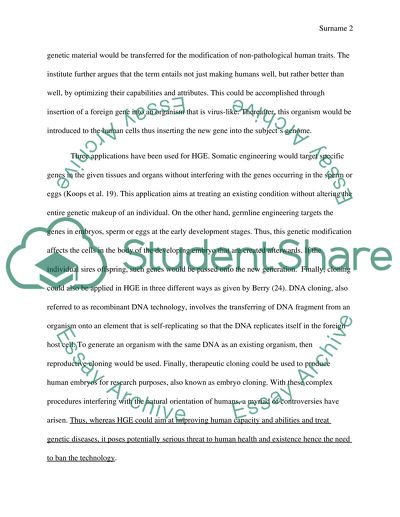Cite this document
(“Human genetic engineering Research Paper Example | Topics and Well Written Essays - 2000 words”, n.d.)
Retrieved from https://studentshare.org/english/1642238-human-genetic-engineering
Retrieved from https://studentshare.org/english/1642238-human-genetic-engineering
(Human Genetic Engineering Research Paper Example | Topics and Well Written Essays - 2000 Words)
https://studentshare.org/english/1642238-human-genetic-engineering.
https://studentshare.org/english/1642238-human-genetic-engineering.
“Human Genetic Engineering Research Paper Example | Topics and Well Written Essays - 2000 Words”, n.d. https://studentshare.org/english/1642238-human-genetic-engineering.


